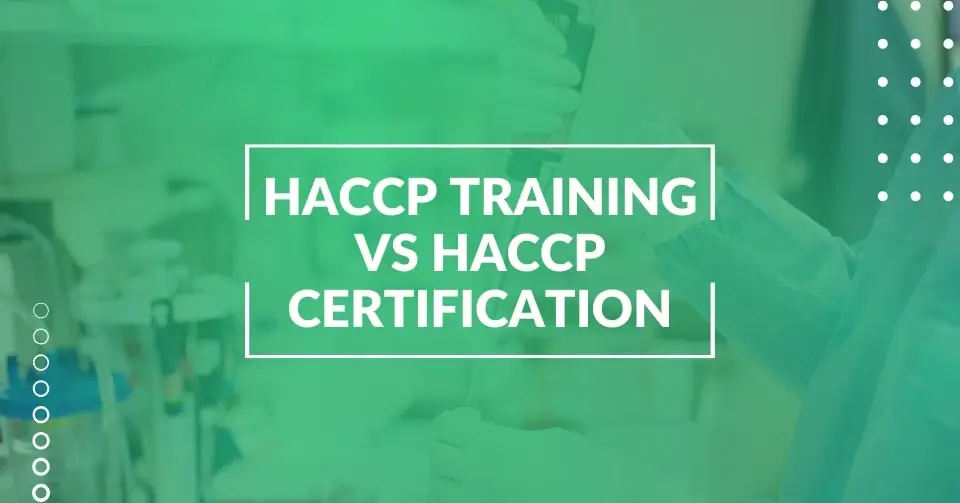In the modern age of global food distribution and varied culinary practices, ensuring the safety of the food we consume has never been more critical. One of the primary concerns in food safety is the identification and control of bacteria, which can pose significant health risks. This article delves into the ways we can detect and manage these microorganisms, ensuring our food remains not only delicious but also safe to eat.
The presence of bacteria in food is a natural and often inevitable aspect of our ecosystem. While some bacteria are essential for processes like fermentation, others pathogenic bacteria can be harmful, leading to foodborne illnesses.
The challenge lies in distinguishing between these types, especially since harmful bacteria often do not affect the taste, smell, or appearance of food. As our food supply chain becomes increasingly complex, spanning continents and involving numerous stages of processing, the risk of bacterial contamination rises. This complexity underscores the need for stringent measures in identifying and controlling harmful bacteria in our food.
The impact of foodborne bacteria on public health cannot be overstated. Each year, millions of people fall ill due to contaminated food, with symptoms ranging from mild discomfort to severe, life-threatening conditions.
The economic burden is also significant, encompassing healthcare costs, loss of productivity, and damage to the reputation of food businesses. These issues highlight the importance of effective strategies to manage bacterial risks in food, not only for consumer safety but also for the sustainability of the food industry itself.
Additionally, the ongoing evolution of bacteria, including the emergence of antibiotic-resistant strains, poses new challenges in food safety. Traditional methods of bacterial control are increasingly being supplemented or replaced by innovative approaches that are more effective and environmentally friendly.
The role of technology in this domain is expanding rapidly, offering promising solutions for early detection and efficient management of bacterial contamination. These advancements are crucial in an era where consumer awareness and demand for safe, high-quality food are at an all-time high.
In this comprehensive overview, we will explore both time-tested and cutting-edge strategies for identifying and controlling bacteria in food. From the basic principles of food hygiene to the latest scientific breakthroughs, our goal is to shed light on how we can continue to safeguard our food against bacterial threats, ensuring a healthier future for everyone.
Identifying Bacteria
I. Traditional Methods of Bacterial Identification and Control
Traditional methods for bacterial identification are rooted in microbiology and have been used for decades to detect and identify bacteria in various settings, including food safety. These methods are generally reliable and well-established, though they can be time-consuming and labor-intensive. Here’s a closer look at some of these traditional methods:
1. Microscopic Examination: Involves staining bacteria and observing them under a microscope to identify cell shape, arrangement, and other characteristics. Include Gram staining, which differentiates bacteria into Gram-positive and Gram-negative based on their cell wall structure. The limitation of this technique is that it requires expertise to interpret and cannot always differentiate between closely related species.
2. Culture Techniques: Involves growing bacteria on media that support the growth of specific types of bacteria while inhibiting others. Differential media contain indicators that change color or appearance based on the metabolic activities of the bacteria, aiding in identification. Enrichment Cultures are used to increase the number of a specific type of bacteria to detectable levels. The incubation conditions vary based on the type of bacteria (aerobic or anaerobic, temperature preferences, etc.).
3. Biochemical Tests: To determine the metabolic and biochemical properties of bacteria. Some examples are Carbohydrate fermentation tests, enzyme tests (like catalase and oxidase tests), and tests for the utilization of certain compounds. Often used in combination to create a biochemical profile that can help identify the bacterial species.
4. Serological Methods: Based on the reaction between specific antibodies and antigens present on the bacterial surface. Slide agglutination test, ELISA (Enzyme-Linked Immunosorbent Assay). Useful in identifying bacteria that are difficult to culture or require long incubation periods.
5. Phage Typing: Involves using bacteriophages (viruses that infect bacteria) that have specificity for certain bacteria. Particularly used in epidemiological studies to trace the source of bacterial outbreaks.
6. Antibiotic Susceptibility Testing: To determine the susceptibility of bacteria to various antibiotics. Kirby-Bauer disk diffusion method or broth dilution method. Though primarily used for clinical purposes, it can be informative in food safety, especially for pathogenic bacteria that can cause human diseases.
7. Fatty Acid Profiles (FAME Analysis): Uses gas chromatography to analyze the fatty acid composition of bacterial cell membranes. This technique can be used to differentiate between bacterial species based on their unique fatty acid profiles.
Traditional methods of bacterial identification remain vital in many laboratories, especially where advanced molecular techniques are not available. These methods provide a foundation for understanding bacterial behavior and characteristics, which is essential in various fields, including food safety, medical microbiology, and environmental monitoring.
Despite their limitations, such as time requirements and the need for specialized skills, these methods continue to be important tools in the identification and study of bacteria.
II. Cutting-Edge Techniques in Bacterial Detection
1. PCR (Polymerase Chain Reaction) This technique is based on the amplification of specific DNA segments to detect the presence of certain bacteria. It Involves repeated cycles of heating and cooling to denature DNA, anneal primers, and extend the DNA strand, exponentially amplifying the target DNA sequence. This method is extremely sensitive, capable of detecting a minute quantity of bacterial DNA. Specific primers allow for the targeting of specific bacterial species or strains. PCR is widely used in food safety for rapid detection of pathogens like Salmonella, E. coli, and Listeria. Also, crucial in genetic research and medical diagnostics.
2. DNA Sequencing – Next-Generation Sequencing (NGS): This method is a revolutionary technology that allows for the sequencing of entire bacterial genomes quickly and cost-effectively. NGS enables precise identification of bacteria, understanding their genetic makeup, and tracking their evolution and spread. Particularly useful in outbreak investigation and antibiotic resistance studies. Metagenomics: Involves sequencing all the DNA in a sample, providing insights into the complete microbial community present in a food sample.
3. Biosensors: This method utilizes biological components (like enzymes, antibodies, or nucleic acids) as recognition elements to detect specific bacteria. The Transduction Mechanism converts a biological interaction into a measurable signal, which could be optical, electrochemical, or thermal. Biosensors are now available as handheld devices for on-site detection, offering rapid results without the need for laboratory facilities. They have been integrated with Smartphones which allow data analysis and results dissemination, enhancing the accessibility of this technology. Biosensors are used for real-time monitoring of bacterial contamination in food processing environments, enhancing the efficiency of food safety management systems.
4. Machine Learning and AI: AI algorithms can analyze large datasets to identify patterns and trends that may be indicative of bacterial contamination. Machine learning models can predict potential contamination risks based on various parameters like temperature, humidity, and historical contamination data. AI can analyze data across a food supply chain to predict where contamination is most likely to occur, enabling proactive measures. This use is called Contamination Hotspot Identification. In food processing, AI can optimize conditions to minimize the risk of bacterial growth. AI algorithms can work in tandem with Internet of Things (IoT) devices, like sensors, to provide real-time monitoring and alerts for potential bacterial contamination.
Controlling Bacteria Growth
The FATTOM principles represent a framework for understanding the factors that influence bacterial growth in food. The acronym FATTOM stands for Food, Acidity, Time, Temperature, Oxygen, and Moisture. Each of these factors plays a critical role in either promoting or inhibiting the growth of bacteria. By managing these factors, food handlers and manufacturers can significantly reduce the risk of bacterial contamination and growth in food products.
Food
Bacteria need nutrients to grow, just like any other living organism. Foods high in protein and carbohydrates, such as meat, dairy products, and cooked vegetables, are particularly favorable for bacterial growth.
Acidity
Most bacteria thrive in neutral to slightly acidic environments (pH levels of 4.6 to 7.5). Foods with high acidity, such as citrus fruits and vinegar, are naturally more resistant to bacterial growth.
Time
Bacteria multiply rapidly, often doubling in number in as little as 20 minutes under ideal conditions. The longer food is exposed to temperatures conducive to bacterial growth, the greater the risk of contamination.
Temperature
Temperature is a critical factor in bacterial growth. The “danger zone” for most bacteria is between 40°F and 140°F (4°C and 60°C), where bacteria can grow rapidly.
Oxygen
Some bacteria require oxygen to grow (aerobic), while others grow in the absence of oxygen (anaerobic). Some can grow under both conditions (facultative anaerobes).
Moisture
Water activity (aw) is a measure of the available water in food for bacterial use.
Most bacteria need a high water activity level (≥ 0.86) to grow.
Cleaning and Sanitizing in Bacterial Control
The Role of Cleaning and Sanitizing
Cleaning and sanitizing are fundamental processes in controlling bacterial contamination in various environments, especially in food production, preparation, and service areas. Cleaning refers to the physical removal of dirt, debris, and organic substances such as food particles, grease, and soil. This process is crucial as these substances can harbor bacteria and provide them with the nutrients needed for growth.
Sanitizing, on the other hand, involves the use of chemical agents or heat to reduce the number of bacteria on a surface to a safe level. While cleaning can remove visible dirt and reduce the overall bacterial load, sanitizing is essential to eliminate potentially harmful bacteria that could lead to foodborne illnesses.
Methods and Products for Cleaning and Sanitizing
The choice of cleaning and sanitizing methods and products depends on the type of surface, the nature of the dirt or contamination, and the specific bacteria being targeted. Cleaning typically involves the use of detergents or degreasers, along with mechanical action like scrubbing, to effectively remove dirt. For sanitizing, various chemicals can be employed, such as chlorine-based compounds, iodophors, quaternary ammonium compounds, and peroxide-based sanitizers.
Each sanitizer has its specific concentration, contact time, and conditions under which it is effective. Additionally, physical methods like steam or hot water can be used for sanitizing, especially in heat-resistant environments. It is crucial that these procedures are carried out correctly, following manufacturer instructions and food safety guidelines, to ensure their effectiveness in bacterial control.
Importance and Challenges in Implementing Effective Cleaning and Sanitizing
Effective cleaning and sanitizing are critical in preventing cross-contamination and the spread of foodborne pathogens in food handling and processing environments. Regular and thorough cleaning followed by appropriate sanitizing can significantly reduce the risk of bacterial contamination, ensuring the safety of food products.
However, challenges in implementing these practices include ensuring staff are adequately trained and understand the importance of these procedures, choosing the right cleaning and sanitizing agents for each specific application, and maintaining consistent and documented hygiene practices. Moreover, the emergence of antibiotic-resistant bacteria poses new challenges, necessitating ongoing research and adaptation of cleaning and sanitizing protocols to ensure they remain effective against evolving bacterial threats.
Personnel Practices in Bacterial Control
The role of personnel in managing bacterial control, particularly in food handling and processing environments, cannot be overstated. Human carriers are often inadvertent vectors for bacteria, capable of contaminating food and surfaces through direct contact or aerosols. Effective personal hygiene practices are therefore crucial in preventing such contamination.
This includes routine and thorough handwashing, especially after handling raw food, using the restroom, or touching any potentially contaminated surfaces. Additionally, maintaining personal cleanliness, such as clean clothing and minimal jewelry, and adhering to strict policies regarding illness and wounds, are vital. Employees with open wounds or infectious illnesses should be restricted from direct food handling roles to prevent the spread of bacteria.
Training and awareness are key components in ensuring that personnel practices effectively contribute to bacterial control. Regular training sessions should be conducted to educate staff on the importance of hygiene, the proper techniques for handwashing, and the correct use of protective clothing, such as gloves and hairnets.
These training sessions should also cover the basics of bacterial contamination, its sources, and the potential risks associated with improper handling of food. In addition, fostering a culture of food safety within the organization encourages employees to be vigilant and proactive in maintaining hygiene standards. This cultural aspect is as crucial as the training itself, as it promotes a shared responsibility among staff to prevent bacterial contamination.
The effectiveness of personnel practices in bacterial control is largely dependent on consistent monitoring and enforcement. Supervisors and managers play a critical role in ensuring that hygiene protocols are strictly followed.
This can be achieved through regular inspections, monitoring of staff practices, and immediate correction of any lapses in hygiene standards. The use of signage as reminders for handwashing and other hygiene practices can be beneficial.
Furthermore, establishing a system of accountability, where employees feel responsible for their hygiene practices, can enhance compliance. By prioritizing and rigorously enforcing these personnel practices, organizations can significantly mitigate the risk of bacterial contamination, ensuring a safer food handling environment.
In summary, the identification and control of bacteria in food is paramount for public health and safety. This article has explored both traditional and cutting-edge methods for detecting and controlling bacteria, emphasizing the importance of these strategies in preventing foodborne illnesses and maintaining food quality.
Traditional techniques, like microscopic examination and culturing, provide foundational knowledge but can be time-consuming. In contrast, advanced methods, such as PCR, DNA sequencing, biosensors, and AI, offer rapid, precise identification and predictive capabilities. Additionally, controlling bacterial growth through the FATTOM principles, alongside effective cleaning, sanitizing, and personnel hygiene practices, is crucial.
These combined approaches underscore the need for vigilant and adaptable strategies in food safety, particularly in response to challenges like antibiotic-resistant bacteria, ensuring that our food supply remains safe and healthy for consumption.
FAQs
Start by testing new technologies like PCR and biosensors alongside existing methods. Gradual implementation based on effectiveness, combined with staff training and regular performance reviews, ensures a smooth transition and enhances food safety protocols with minimal disruption.
Addressing high costs and the need for specialized training can be managed through partnerships for financial and technical support, developing low-cost technology versions, and local training initiatives to make advanced bacterial control methods more accessible.
Bacteriophages, natural antimicrobials, and probiotics are promising alternatives. Support for the development and adoption of these methods through research and regulatory incentives is essential for effective implementation in food production.
Engaging in continuous education through workshops, subscribing to food safety journals, and joining professional networks helps professionals stay informed about the latest developments and best practices in microbial control.







